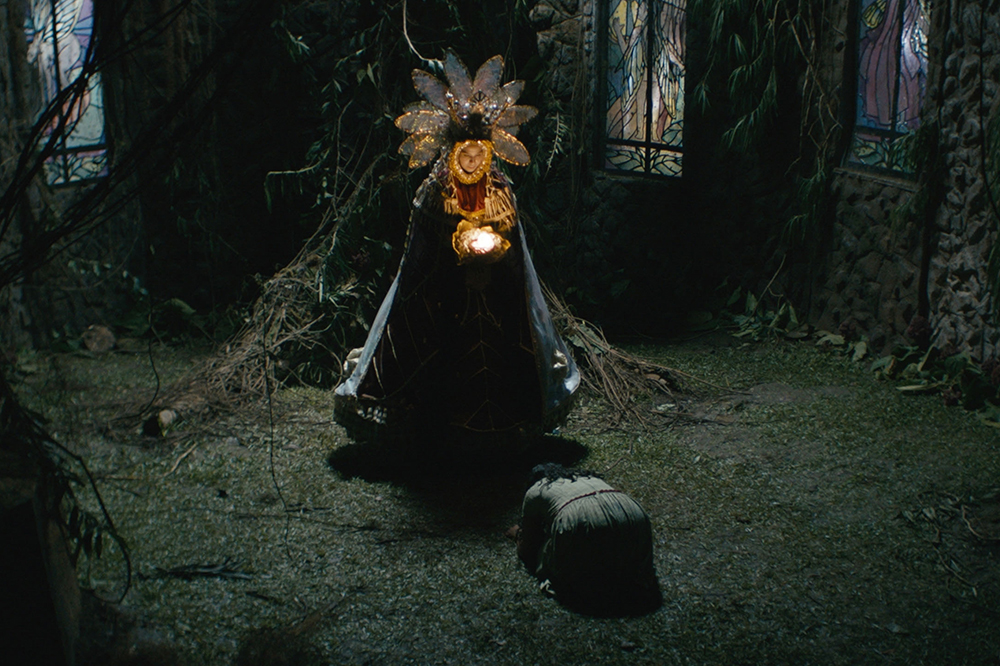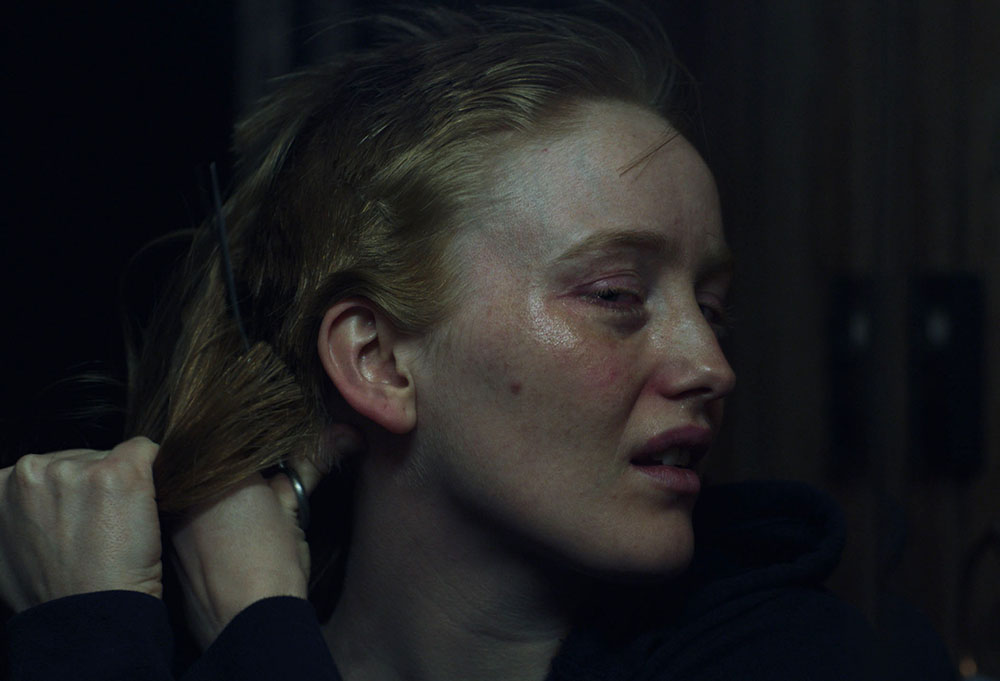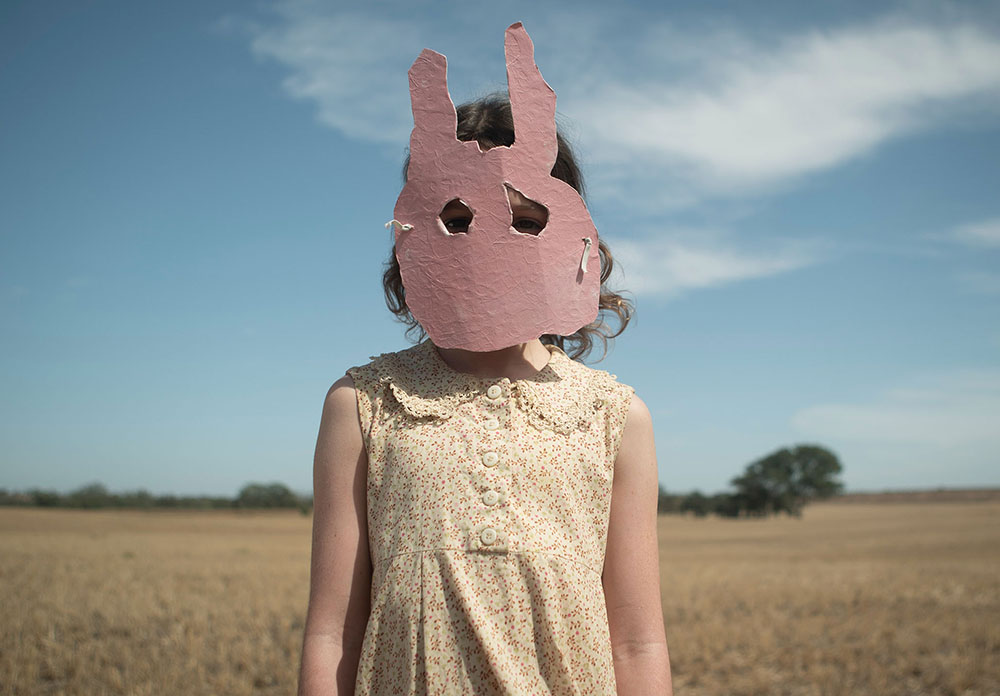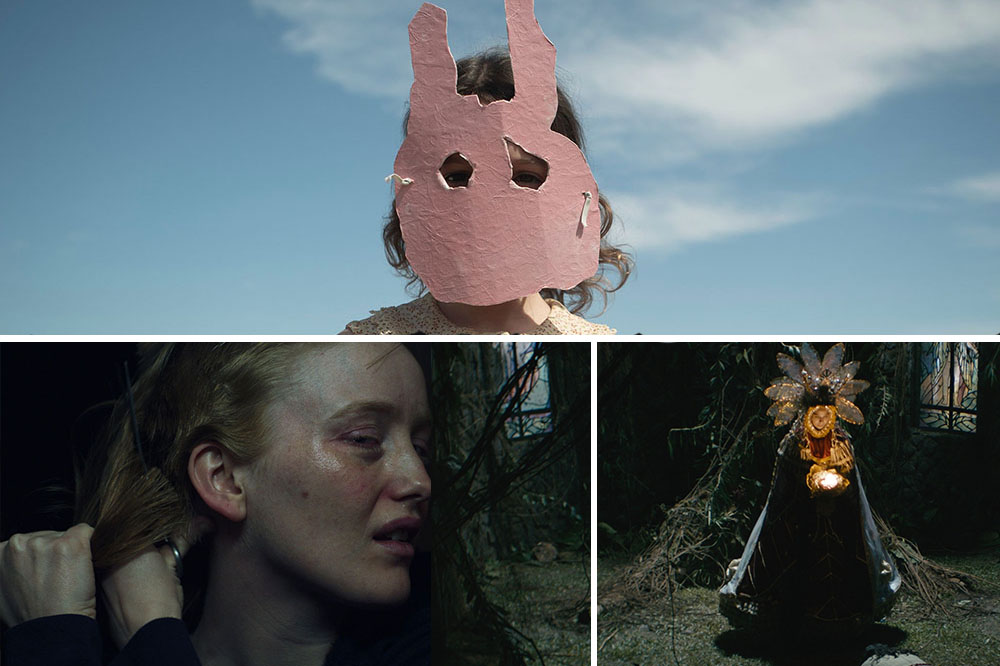Like most years, the 2023 Sundance Film Festival has had an eclectic and exciting array of ‘Midnight’ selections. Some films play with the classic werewolf story in ways I have never seen before, flesh-eating fairies inspired by Guillermo del Toro’s “Pan’s Labyrinth,” Brandon Cronenberg’s hallucinogenic madhouse follow-up to “Possessor,” fresh takes on Mary Shelley’s classic book that remind me of Paul Morrissey’s “Flesh for Frankenstein,” and summoning demons as a new form of party drug.
Overall, it has been equally exciting and horrifying, amounting to a unique selection of horror pictures. I was fortunate enough to have seen most horror films in their lineup. In these capsule reviews, I will discuss three of the ‘Midnight’ program’s films: the sluggish yet intriguing “In My Mother’s Skin,” the surprising “My Animal,” and the unfortunately disappointing “Run Rabbit Run.”
‘In My Mother’s Skin’ (Dir. Kenneth Dagatan)

First off is Kenneth Dagatan’s latest feature, “In My Mother’s Skin” — a film that takes inspiration from Guillermo del Toro’s “Pan’s Labyrinth” but doesn’t reach its true horrifying potential.
The film is set in the Philippines in 1945, nearing the end of World War II. The film follows an affluent family living stranded in their country mansion. They are tormented by Japanese soldiers who are occupying the residence while they lose grip on the island. However, rumors are lurking around. There’s stolen Japanese gold hidden near the estate’s grounds. The family patriarch runs away to avoid getting caught in the search. Meanwhile, the mother falls sick with illness. Their young daughter seeks help to help those who she loves, but putting her trust in a beguiling flesh-eating fairy isn’t going to do it. “In My Mother’s Skin” is a dark fairy tale embedded in Filipino folklore with Catholicism to make a nightmarish vision come to life.
By reading the plot synopsis or watching the first act of the film, you can see the “Pan’s Labyrinth” comparisons. Of course, nothing will amount to Guillermo del Toro’s magnum opus. Though, Dagatan pulls off some fascinating set pieces that horrify and intrigue the audience. The war-torn land intertwines with the ghastliness of the fairy tale’s story maneuvers — delivering significant amounts of dread and despair as this youngling tries to uncover the mysteries behind her mother’s situation. The best aspects of “In My Mother’s Skin” are those moments where Dagatan lets the scenery breathe in its darkened state. The symbolism of the themes juxtaposed by the folklore is striking. It pulls you into the world Dagatan is slowly (yet slightly deliberately) building. While all of that sounds exciting, the film, unfortunately, disappoints because it doesn’t amount to a well-worked final product. And here’s why.
The film constantly struggles to hold your attention because “In My Mother’s Skin” doesn’t work in unison. What I mean by that is that it contains favorable individual set pieces, but when they are put together, it loses its effects in the long run. Dagataon indeed stays with his vision. Yet, it does feel as if he is forcing a handful of scenes into its storylines just to bring more detail to its narrative. The movie needed some trims in the editing room before it went to its third and final act. Another reason why it doesn’t gel entirely by the end is that its pacing is frustrating. While I did enjoy the calmness during its symbolic expressions, the rest of the film feels like it is withholding more than it needs to.
His previous work, “Ma” (which sort of tackled some similar topics more effectively and was twenty minutes shorter), didn’t feel like that. Of course, both features contain great visceral moments that allude to many J-horror films (primarily in the possession scenes). Regardless, Dagatan struggles to find “In My Mother’s Skin” precise footing, which hurts its longevity in the long run. Kenneth Dagatan has a good handling of the horror genre, which is evident in the bloody or horrifying sequences. This isn’t a total blow-out disappointment but a misfire from a talented filmmaker.
Grade: C
‘My Animal’ (Dir. Jacqueline Castel)

The second film I will be talking about is Jacqueline Castel’s feature-length debut, “My Animal“. This one has a fresh take on the classic werewolf mythology and a banging soundtrack by Boy Harsher’s Augustus Muller.
“My Animal” is led by Heather (Bobbi Salvör Menuez), who struggles more than the teens in her age group in a small Northern town. She’s a social outcast, aspiring to be a local adult hockey team goalie. There’s some hate from the team’s coach because he has a harsh preference toward male players. He doesn’t let women join his team. Another reason why she’s alone most of the time is that her household is troubled. Heather’s mother, Patti (Heidi von Palleske), is an alcoholic who wanders around and bothers her at any given moment. Mood swings influenced by liquor cause Heater distress and frustration. She begs for the day to be freed from the chains of parental control. However, things aren’t that easy. This family is hiding secrets of their own that might cause them danger if they aren’t careful.
Every full moon, Heather has to be shackled onto her bed. She inherited a special gift (or “curse,” if you look at it from her point of view) from her father, Henry (Stephen McHattie). Her life changes when she meets a new figure skater in town, Jonny (Amandla Stenberg). Yet, as their chemistry escalates, Heather has to face her inner beast. Jacqueline Castel plays with what we know about werewolves and the tropes that come with them. Instead of being a “conventional monster movie” that focuses on the gory aspects of the inner beast (and the monstrosity that comes with it), “My Animal” explores sexuality and individuality. The film links lycanthropy and sexuality as they relate to the exploration through Heather’s human side. Castel focuses on mood and emotion to uplift the horror and dramatic sensibilities rather than using practical effects like in “An American Werewolf” in London.
For those seeking insane werewolf action or graphic violence, this isn’t it. “My Animal” is quite the opposite of that. Castel draws you into the frosty settings and warms you with a lovely story of self-discovery, which later slowly transitions into heartbreak through the main character’s evolution as the classic monster. The original score by Augustus Miller (of the electronic musical duo Boy Harsher, whom I love) heightens the mood and atmosphere of the film. However, there’s an issue with Heather’s werewolf side. The film doesn’t explore this part of her life to its highest possibility. There’s a sensation at the end where you don’t know Heather right until the very end. And although there is a favorable counter-argument that she didn’t know herself until that specific point in the narrative, it still feels that it needed a few more details to broaden its point.
On a positive side, Bobbi Salvör Menuez (and Heide von Palleske, while she’s on-screen) gives a good performance that showcases her internal angst and needs for an embrace. The work by cinematographer Bryn McCashin helps to showcase these emotions. His lens is sensitive in moments of unhurriedly-building devotion and vibrant when the inner beast wants to let out. “My Animal” may not be the film you might expect it to be when you hear the term “werewolf” attached to it. However, Castle brings new depth to the classic mythos of the classic movie monster that has graced the screen for many years. And because of that, I very much appreciated her retaliation against tropes and conventions.
At times energetic, romantic, and heartbreaking “My Animal” reaches new heights, although some reworks in the script could have given it a bigger kick in its narrative. But, in the end, I found myself enjoying it and getting some points for including Boy Harsher.
Grade: B
‘Run Rabbit Run’ (Dir. Daina Reid)

The third (and final) one in the bunch is the highly disappointing “Run Rabbit Run,” by director Daina Reid. Sarah Snook does the best she can with the poor material given to her, but it isn’t enough.
A fertility doctor, Sarah (Sarah Snook), celebrates her daughter Mia’s seventh birthday expecting nothing to go wrong. Immediately, there’s an unnerving wind swirling into their household. Sarah seems to have everything under control in her life, but something is altering her ability to maintain things stable. Mia (Lily LaTorre) begins to behave oddly; she’s not been feeling like herself lately. A lot of things start to happen where Sarah’s dark past connects with the behavior of her now distant young daughter. Nevertheless, in the end, it all turns out as a commanding mess of frustrating questionable decisions by the crew involved. The editing in “Run Rabbit Run” is not only uninspired but jarring in the sense of cohesion and narrative structure. How can a film miss a lot of backstory and details because the scenes are cut short yet still feel as if it was two hours long?
Even if it had coherent editing, the story in “Run Rabbit Run” is still vaguely put together. People might compare them with other Australian horror pictures like “The Babadook” because of the story where a mother is still suffering from a traumatic incident. The child is experiencing those feelings second-hand via a supernatural entity. Still, it follows too many familiar beats that you can’t distinguish Reid’s narrative from the other ones. It makes you want to watch films that tackle these topics better. “Run Rabbit Run” has Sarah Snook in the lead, so it has that going for it. However, if the material given to her is not working at all, it isn’t going to take the movie far.
The performance will be as strong as the screenplay and director takes them. Which here, unfortunately, is not very distant. And, on top of it all, the worst thing you could say about the movie is that it’s dull and bland.
Grade: D
Sundance Film Festival concludes tomorrow, January 29th, 2023. Follow us for continuing dispatches, reviews, capsules, and wrap-ups.


